
Coral Bells: A Guide to Planting, Growing, and Caring
Published: 20/09/2024 | Updated: 20/09/2024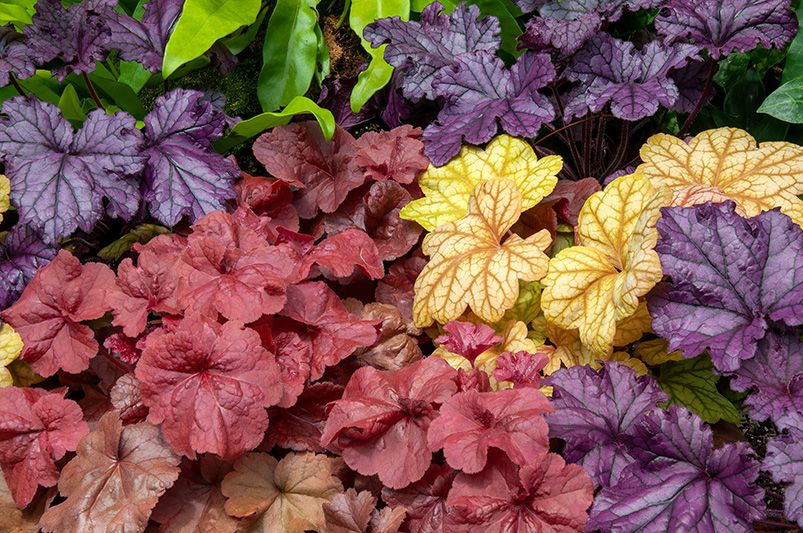


Coral Bells: A Guide to Planting, Growing, and Caring
Coral Bells (Heuchera) are a gardener’s dream when it comes to adding color, texture, and charm to any landscape. Known for their vibrant foliage and delicate blooms, Coral Bells are versatile perennials that thrive in various garden settings, making them a perfect choice for borders, container gardens, and ground cover. Whether you're new to gardening or looking to add more variety to your yard, these stunning plants offer something for everyone.
In this article, we’ll dive deep into everything you need to know about Coral Bells—from their vibrant varieties to planting and care tips.
General Information and Description:
Coral Bells, scientifically known as Heuchera, are native to North America and are prized for their striking foliage, which comes in a variety of colors ranging from deep purples and bright greens to silvery hues and even variegated patterns. Although their foliage steals the show, Coral Bells also produce delicate bell-shaped flowers that bloom on tall stems in late spring to early summer, attracting pollinators like bees and hummingbirds.
One of the best features of Coral Bells is their ability to thrive in both shade and partial sun, making them ideal for different garden areas. Their low-maintenance nature, combined with year-round interest thanks to their evergreen leaves, makes them a top choice for home gardeners. These perennials are not only ornamental but are also resistant to deer, making them a great choice for anyone dealing with wildlife intruders.
Popular Varieties of Coral Bells
Coral Bells come in a wide range of stunning varieties, each bringing its own unique charm to any garden. Whether you're looking to create vibrant borders or colorful ground cover, there’s a Coral Bells variety for every taste.
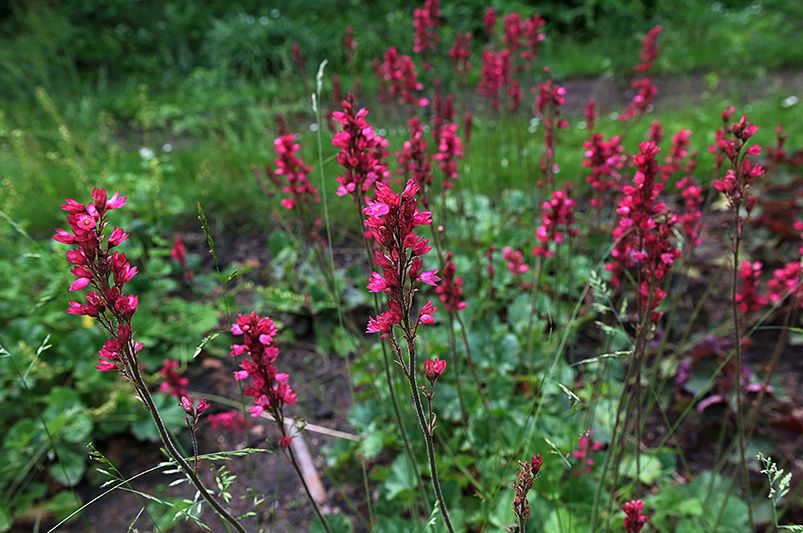
Berry Timeless Coral bells
Berry Timeless Coral bells are a captivating perennial that enhances gardens with their evergreen foliage throughout the year. The leaves feature a striking contrast, with deep maroon centers and vibrant pink edges. In summer, graceful stems rise to showcase clusters of delicate pink flowers, creating a beautiful display. This plant thrives in partial shade and prefers moist, well-drained soil. As a low-maintenance option, it requires minimal care while attracting charming hummingbirds and butterflies, making it a delightful addition to any garden.
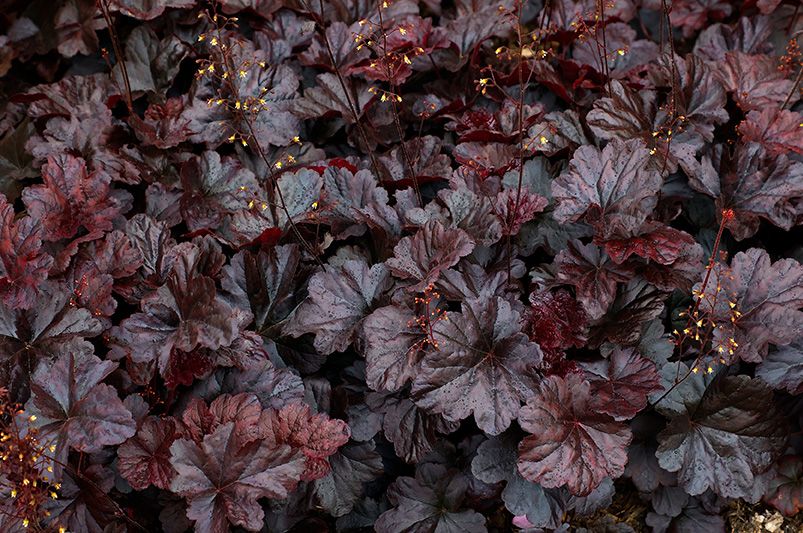
Blackout Coral Bells
Blackout coral bells are a versatile perennial that brings depth and drama to any garden with their striking, nearly black foliage. This rich color creates a stunning contrast against lighter plants, enhancing the overall visual appeal. In late spring or early summer, delicate pink or white flowers emerge, adding a refreshing pop of color. With their drought and heat tolerance, these low-maintenance plants are perfect for any landscape, providing beauty and resilience in a variety of conditions.
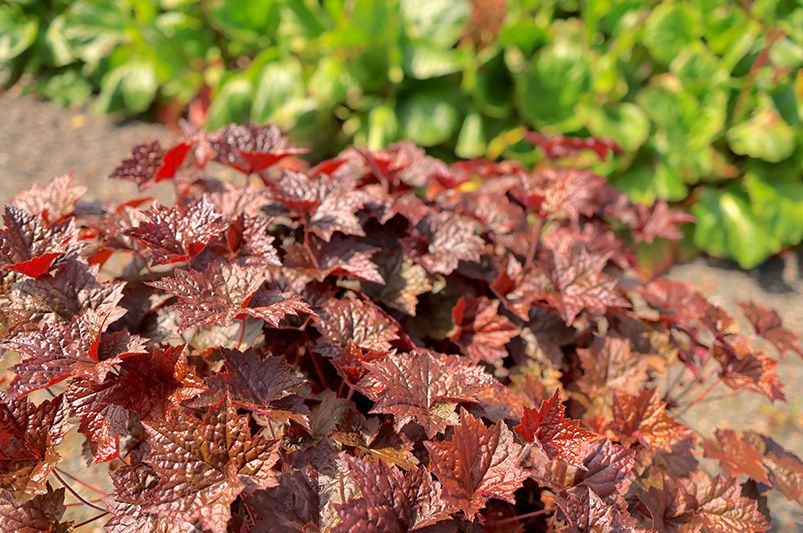
Bronze Wave Coral Bells
Bronze Wave Coral Bells are a highly sought-after perennial, celebrated for their stunning foliage. The unique scalloped leaves display a striking bronze hue that glimmers almost metallically in direct sunlight. In addition to their vibrant foliage, they produce delicate, spiky flowers that attract hummingbirds and butterflies, enhancing the garden's liveliness. Preferring partial shade and well-drained soil, Bronze Wave Coral Bells are perfect for rock gardens, borders, or as standout focal points in container gardens. Hardy and adaptable, these plants thrive in nearly any U.S. growing zone, making them an excellent choice for diverse landscapes.
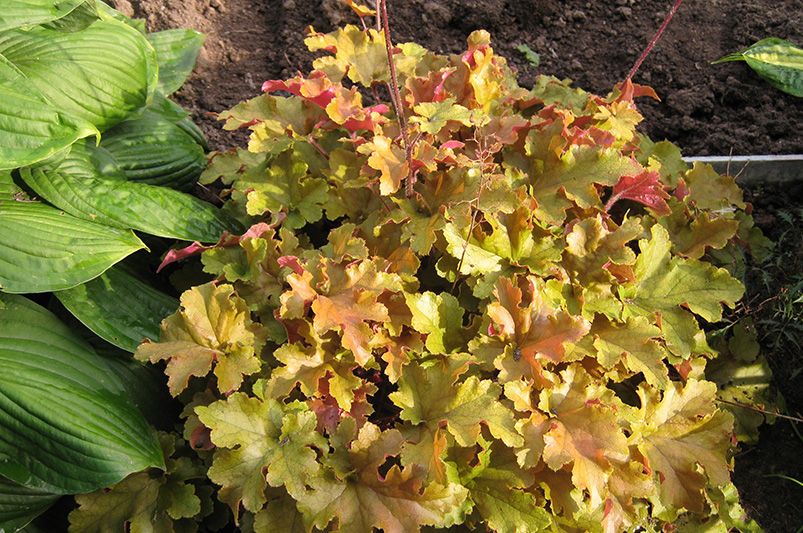
Caramel Coral Bells
Caramel Coral Bells are a beloved choice for gardeners and landscapers, featuring beautiful bronze-orange foliage paired with delicate bell-shaped flowers. This easy-to-care-for perennial adapts well to a variety of conditions, making it a versatile addition to any garden. Ideal for borders, rock gardens, or as an attractive ground cover, Caramel Coral Bells also draw beneficial pollinators like hummingbirds and bees, enhancing the garden's vitality. Whether you’re looking to add color or support local wildlife, this plant is a fantastic option.
Planting and Growing Conditions for Coral Bells
Coral Bells, or Heuchera, are versatile and hardy perennials that thrive in a variety of growing conditions. With their wide range of leaf colors and textures, they are perfect for adding year-round interest to your landscape. To ensure that your Coral Bells thrive, it's essential to understand the ideal planting and growing conditions.
Sunlight Requirements
Coral Bells perform best when planted in partial shade. While they can tolerate some sun, too much direct sunlight, especially in hotter climates, can cause their vibrant foliage to fade or scorch. Varieties like Caramel Coral Bells are more sun-tolerant and can be planted in areas that receive more sunlight. In general, it's recommended to plant Coral Bells in areas where they will get morning sun and afternoon shade for optimal growth.
Soil Preferences
Coral Bells prefer rich, well-draining soil that is slightly acidic to neutral. They can tolerate a variety of soil types, but well-drained soil helps prevent root rot, a common issue with these plants. If you’re planting in heavy clay or poor-draining soil, consider adding compost or organic matter to improve drainage. A good tip is to plant them in raised beds or on slopes to help water flow away from the roots.
Watering Needs
Coral Bells require regular watering, especially in their first year of growth or during hot, dry periods. They prefer consistently moist soil, but it’s important to avoid waterlogging the roots. A layer of mulch around the base of the plant can help retain moisture while keeping the roots cool and reducing weed growth. Ensure the soil remains evenly moist but not soggy.
Temperature and Climate
Coral Bells are cold-hardy plants, thriving in USDA zones 4-9. They can tolerate frost and freezing temperatures, though they may need some winter protection in colder regions. A layer of mulch can help insulate the roots during winter, while in warmer climates, it helps protect against heat stress. Coral Bells also appreciate a cool, sheltered spot during the hottest part of the day.
By planting Coral Bells in the right spot with proper care, you’ll enjoy their lush foliage and delicate blooms year after year.
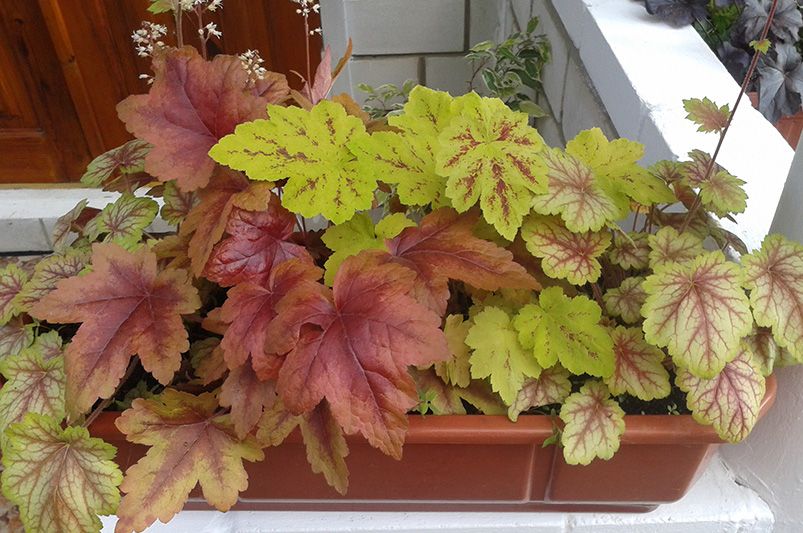
Caring and Maintaining Coral Bells
Coral Bells are relatively low-maintenance plants, but like any perennial, they thrive when given the right care and attention. Proper care ensures that these stunning plants keep their vibrant colors and textures throughout the seasons. Here are some essential tips for maintaining your Coral Bells:
Watering Practices
While Coral Bells prefer consistently moist soil, overwatering can lead to root rot. Water deeply, but infrequently, allowing the soil to dry out slightly between waterings. Be mindful of weather conditions — during hot, dry spells, you may need to water more frequently, but during cooler or wetter periods, reduce watering. A good rule of thumb is to keep the soil moist but not waterlogged.
Fertilization
Coral Bells are not heavy feeders, but applying a slow-release, balanced fertilizer in early spring will give them a nutrient boost to support new growth. You can also top-dress with compost or organic matter to enrich the soil. Avoid over-fertilizing, as too much nitrogen can lead to excessive leaf growth at the expense of flowers and can reduce the intensity of the foliage colors.
Pruning and Deadheading
To keep your Coral Bells looking their best, remove spent flower stalks after blooming to encourage more foliage growth and maintain the plant's neat appearance. Additionally, pruning dead or damaged leaves throughout the growing season helps the plant focus its energy on new growth. In spring, trim back any old foliage that may have withered over the winter months.
Dividing Coral Bells
As Coral Bells grow, they can form large clumps over time, which may start to crowd out surrounding plants. Dividing the plants every three to four years helps rejuvenate them and promotes healthier growth. Early spring or early fall is the best time to divide Coral Bells. Simply dig up the plant, gently separate the clumps, and replant them in new locations or share them with friends!
Winter Care
Although Coral Bells are cold-hardy, providing winter protection will help them survive particularly harsh winters. Adding a layer of mulch around the base of the plant in late fall helps insulate the roots from freezing temperatures. In colder climates, consider covering the plants with a frost blanket to further protect them from winter damage. Be sure to remove the blanket and excess mulch in early spring to prevent rot as the weather warms up.
By following these simple care guidelines, your Coral Bells will continue to thrive and add beauty to your garden.
Common Diseases and Pests
Even though Coral Bells are known for their hardiness, they can still fall victim to certain pests and diseases if not properly cared for. Awareness and proactive measures will help you protect your plants and keep them flourishing.
Powdery Mildew
One of the most common diseases that affect Coral Bells is powdery mildew, a fungal infection that shows up as a white, powdery coating on the leaves. This disease thrives in warm, humid conditions with poor air circulation. To prevent powdery mildew:
- Space plants appropriately to allow for good air circulation.
- Water at the base of the plant rather than overhead to keep the foliage dry.
- Remove infected leaves and dispose of them properly to avoid spreading the spores. If powdery mildew becomes an issue, you can treat the plant with a fungicide or use an organic remedy like neem oil.
Crown Rot and Root Rot
Overwatering or poorly draining soil can lead to crown or root rot, which can severely damage or even kill Coral Bells. These fungal diseases cause the plant to wilt, with the crown or roots turning mushy and brown. To avoid these issues:
- Ensure proper drainage by planting Coral Bells in well-draining soil or raised beds.
- Avoid overwatering and allow the soil to dry slightly between watering sessions.
- If crown or root rot occurs, remove the affected parts and consider replanting in a better-draining location.
Rust
Rust is another fungal infection that can cause small orange or brown spots to appear on the leaves. It thrives in damp environments. To prevent rust:
- Water in the morning so that any moisture on the leaves can dry during the day.
- Prune plants regularly to improve air circulation. For infected plants, remove affected leaves and apply a fungicide if necessary.
Pests: Aphids and Vine Weevils
Aphids are tiny insects that feed on plant sap, often gathering in clusters on new growth. While a small infestation may not harm the plant, large groups can stunt growth and cause leaves to curl or discolor. To manage aphids:
- Spray plants with water to dislodge the insects.
- Introduce beneficial insects like ladybugs, which feed on aphids.
- Use insecticidal soap for larger infestations.
Vine weevils are beetles that can chew notches into the leaves of Coral Bells, while their larvae feed on the roots. If you notice damage:
- Use nematodes, microscopic organisms that attack weevil larvae in the soil.
- Apply an insecticide targeted for weevils.
By taking these precautions, you can ensure your Coral Bells remain healthy and vibrant, free from the stress of diseases and pests.
Conclusion
Coral Bells are not only a beautiful addition to any garden but also versatile and relatively easy to care for when provided with the right growing conditions. With their stunning foliage and seasonal blooms, these plants add color and texture to your landscape all year long. By choosing the right varieties, ensuring proper planting conditions, and taking steps to manage pests and diseases, you can enjoy vibrant and healthy Coral Bells for years to come.
Are you ready to transform your garden with the beauty of Coral Bells? Explore our wide selection today on ShrubHub's Plant Marketplace and find the perfect variety to enhance your outdoor space. Don't forget to check out our weekly blog articles for more expert gardening tips and inspiration. Let’s make your garden flourish!


